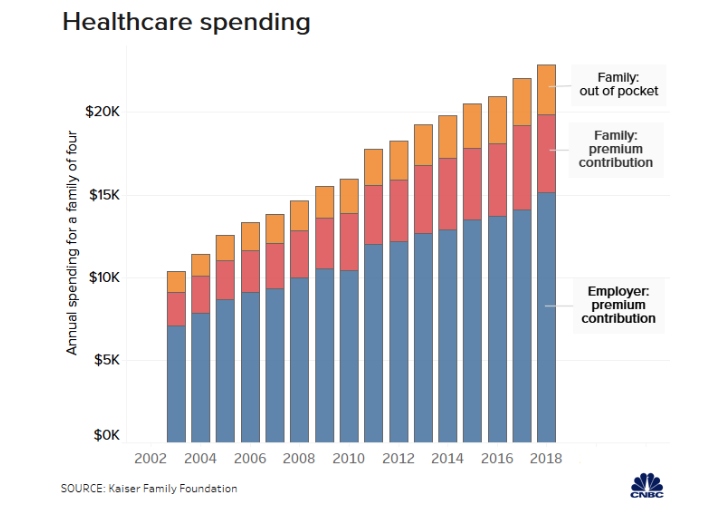Americans want Congress to address out-of-control health care costs; these costs have been Americans’ top policy concern for several years. Until Congress acts, costs likely will continue to rise. Axios reports that in 2018, Americans spent $3.65 trillion on health care, 17.7 percent of the economy.
Health care spending grew by 4.6% between 2017 and 2018. It grew even more than in the previous year, when it grew by 4.2%. Both years, higher prices, not an increase in utilization, fueled the increase. According to federal actuaries, corporate health insurers and corporate Medicare plans did not rein in health care prices.
Corporate health insurers have an incentive to allow provider rates to increase. The more they pay providers, the more they can charge in premiums. The more they charge in premiums, the more they can profit.
Higher health care costs in 2018 as well as in 2017 led to a one million person increase in the number of uninsured in each of those years. At the end of 2018, there were 30.7 million uninsured. Health insurance premiums are up, as are deductibles. In 2018, deductibles were $500 higher than a decade earlier, $1,400 as opposed to $900.
The number of people with corporate health insurance–largely employer-based coverage–dropped a bit in 2018. But, the per capita cost of private health insurance rose by 6.7 percent to $6,199 a person. Hospitals, doctors and pharmaceutical companies were able to secure significantly higher rates from insurers, leading to higher insurance premiums.
In 2018, total health care costs average around $11,000 per person. About one third of that cost was for hospital care. About one fifth of the cost was for medical care. And, about nine percent was for retail pharmacy costs.
Medicare and Medicaid, public programs, experienced much slower growth than corporate health insurance, 2 percent and 3.7 percent as compared to 6.7 percent. Corporate Medicare and Medicaid insurers were responsible for increases in these programs’ spending.
The National Business Group on Health expects that premiums will increase 5 percent for workers and their families in 2o2o. The average cost of workplace coverage will be $15,375, up from $14,642. Employers typically pay about 70 percent of premium costs for individuals and families.
Workers will be responsible for an average of $4,500 in premiums in 2020. In 2018, the average household spent more than $5,000 on health care, double what they spent on health care 34 years earlier, in 1984.
Here’s more from Just Care:










